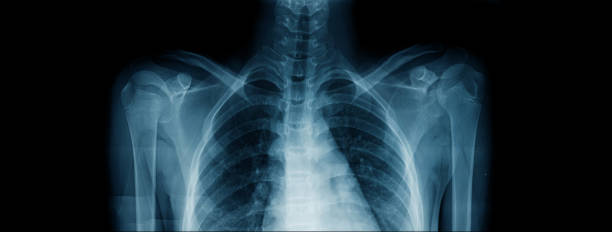Artificial Intelligence Tools Detect Pathologies on Chest X-Rays
In a recent publication, an artificial intelligence diagnostic tool detected pathologies on chest X-rays as well as human radiologists.

Source: Getty Images
- On September 15, 2022, Nature Biomedical Engineering published an article where researchers from Harvard Medical School and Stanford University analyzed the efficacy of an artificial intelligence diagnostic tool. The study found that the tool’s ability to detect pathologies in chest X-rays was comparable to human radiologists.
The device is called CheXzero, a self-supervised type of artificial intelligence. In a press release, Harvard Medical School explained that traditional AI models must be trained to detect conditions and make diagnostic conclusions. The announcement explains that this diagnostic tool does not require training, unlike other forms of AI.
“We’re living the early days of the next-generation medical AI models that are able to perform flexible tasks by directly learning from text,” said Pranav Rajpurkar, lead study investigator and assistant professor of biomedical informatics in the Blavatnik Institute at Harvard Medical School in the press release. “Up until now, most AI models have relied on manual annotation of huge amounts of data — to the tune of 100,000 images — to achieve high performance. Our method needs no such disease-specific annotations.”
This significantly reduces the burden of developing AI for medical imaging. Instead of training, this diagnostic tool looks at X-rays and the accompanying notes to make a formal diagnosis.
Based on the study published in Nature, CheXzero effectively detected pathologies in chest X-rays. It was even able to see conditions not initially identified by human radiologists. In addition to diagnostic skills comparable to trained physicians, the CheXzero technology was better than other similar AI tools.
“CheXzero shows that accuracy of complex medical image interpretation no longer needs to remain at the mercy of large labeled datasets,” said Ekin Tiu, an undergraduate student at Stanford and a visiting researcher at Harvard Medical School, in the press statement. “We use chest X-rays as a driving example, but in reality, CheXzero’s capability is generalizable to a vast array of medical settings where unstructured data is the norm and precisely embodies the promise of bypassing the large-scale labeling bottleneck that has plagued the field of medical machine learning.”
Currently, this diagnostic tool is only being used for chest X-rays. However, further research may reveal if this technology can be applied to other X-rays. Additional iterations of this research must be conducted before this device can be fully integrated into radiological practices.
